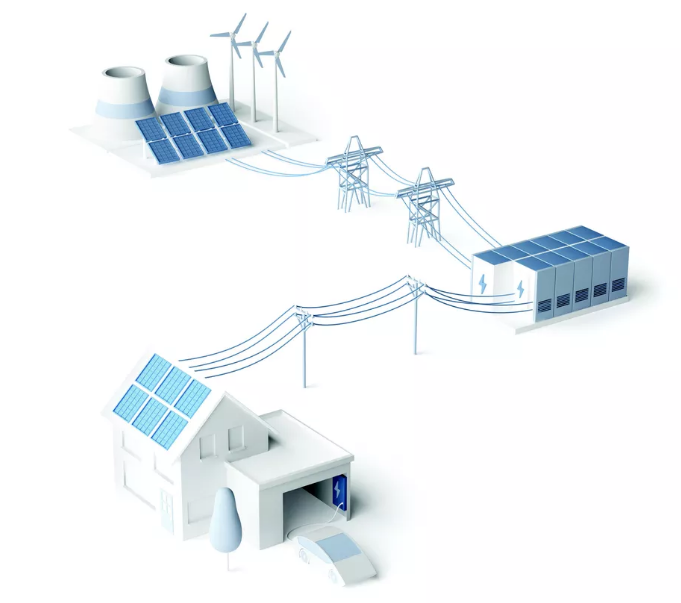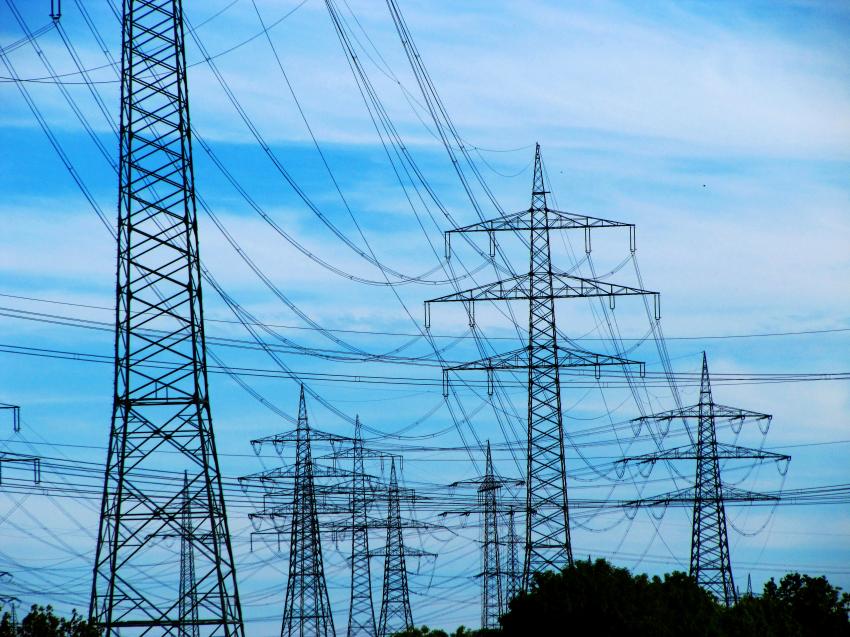While you might not notice a difference as you flip the light switch like you always have, behind the scenes, the way you’ve been getting your power, may be changing in a big way. Instead of traveling from a large centralized power plant or a distribution station, the electricity you use to charge your iPhone could come to the solar panels on your neighbor’s roof and stored up in a massive battery installed in your shed.
Since our power grids were first built over a century ago. Very little about them has changed. However, the first changes are already beginning so that soon we will be sharing the power and control only utilities companies use to have.
Everybody, from regular everyday people, new companies, and even conventional power companies, is getting in on the action but the big man behind the vision is Elon Musk, CEO of Tesla. As the manufacturer of the solar tiles to generate the power, the mammoth batteries to store the power, and the electric cars to use the power, he is also one of the biggest beneficiaries of the changeover.
Tesla is a bit ahead of the curve, but he’s aiding the build of a new system where anyone can generate energy in addition to using it, and where batteries in houses or with utility companies can store electricity when it’s in abundance and share it out when it’s lacking.
“We’re trying to move away from that traditional one-directional grid,” says Vivek Narayanan, who leads grid innovation efforts at California utility Pacific Gas & Electric. “We’re evolving toward the grid of the future.”
First, you have to understand how our current system, the typical single direction grid, works. At any given time, the power companies and utility distributors must exactly balance the amount of energy produced with the power needed at any given moment. There is zero cushion in their operation. If more power is created than needed, that power goes to waste. Likewise, if there is a surge in power use, like on a hot day when everyone is using their air conditioners, then energy suppliers must scramble to produce it or risk brownouts across the power grid.

Essentially, every energy consumer is lucky the power is available when they flip on the light switch or plug in the phone chargers. It’s a wonder that the entire grid hasn’t been reworked before now or failed completely as operators have less than razor thin power margins, they have zero wiggle room to supply what is in constant demand.
There are more complications in our power supply too. Most types of power, like coal, hydroelectric, and nuclear, are produced in steady amounts whole others, like natural gas, are burned on demand to meet higher demands. On the other hand, alternative sources like solar and wind, only supply power when the sun is out, and the wind is blowing, making it more difficult for power suppliers to meet fluctuating demand.
Although the Trump administration would like to reinvigorate coal power, the meager cost of natural gas makes that very unlikely, no matter the availability of other alternative energy sources, according to Jonathan Mir, the head of the North American energy infrastructure at Lazard.
“The Republican administration should remind themselves of King Canute, who showed one cannot command the tides,” Mir says.
So where will the Tesla batteries fit into a changing system of demand and a mismatch of power types? “Today you have a grid built to meet the demand of the hottest minute of the hottest day of the hottest decade,” says Michael Oster, CEO of Eos Energy Storage, which makes batteries for RVs and grid operators and maybe batteries for the home too. “If you have storage, you’re able to build the grid more toward the average.” Such a change could pay out dividends for you utility companies. A large-scale battery system, Tesla’s Powerpacks for example, can power 750 homes for 4 hours. Even with a price tag of $1.8 million, the megawatt battery would be cheaper than upgrading existing lines or equipment.
Already a Tesla 2,000-kilowatt battery has been installed in a Pacific Gas & Electric substation north of Sacramento. This battery’s capacity is enough to power 375 homes for four hours or the equivalent of 33 Chevrolet Bolts or more than 35,000 Apple MacBook Pro laptops. Two more Powerpacks of larger capabilities are installed at Kaua’i Island Utility Cooperative, a 52-megawatt-hour battery of 870 Bolts in that case, and for Southern California Edison, an 80-megawatt-hour battery, the equivalent of 1,330 Chevy Bolts.
And that’s not all for Tesla’s plans to change up the system. Once their Gigafactory is fully operational, expected sometime between 2018 and 2020, the costs of the battery are meant to drop by 30%. Lazard’s Mir says that like the way solar and wind power gained traction after the prices dropped, so too will battery electrical storage gain new ground. A price drop would make their ultimate goal an actuality as Tesla ultimately would like to see the home-sized battery in every household. The Powerwall 2, said to light up a two-bedroom house for 24 hours, costs $5,500, or up to $7,000 with installation costs.
Jonathan Mir doesn’t think the price tag will go over so well, nor make financial sense for most people. A senior advisor for the Regulatory Assistance Project, Jim Lazar, doesn’t think that’s necessarily true, that there is a place for home battery storage, but only after the adoption of less expensive options like an ice-making air conditioner or a utility-controlled water heater.
“The $500 water heater stores as much energy as the $5,500 Powerwall,” he says.
However, changes to energy pricing practices could alter the entire playing field anyway. The way it works right now, for utility consumers with solar panels, is a practice called net metering. If you use as much power as is generated from the solar panels, you owe the utility company nothing. In some cases, the utility company can draw power from your panels and end up owing you money. Both of those scenarios work out great for the consumer but do not work in the favor of the power company hoping to make a profit.
Over 75 percent of states have these net metering policies which are causing tension between the utility companies and solar panel owners. Some states though, like California, are changing the net metering rates and policies.
Such a move, or going further like getting rid of net metering all together, could spur homeowners to buy battery storage, especially if power companies dramatically raise their peak hour rates making the batteries more economical anyway. Loic Gaillac, a senior manager at Southern California Edison, expects a “tremendous expansion” of home energy storage when pricing policies change.
If utility companies do not adapt they will die, adds Lazar. “That evolution is inevitable, necessary and underway.” More than likely, any changes that do occur will be messy on all sides but companies like Tesla, and CEOs like Musk, thrive on revolutionary progress like the proposed changes to the energy grid. And even if it seems difficult to believe, like electric cars or affordable solar panels, we all will have to get used to it as well.
More News to Read











